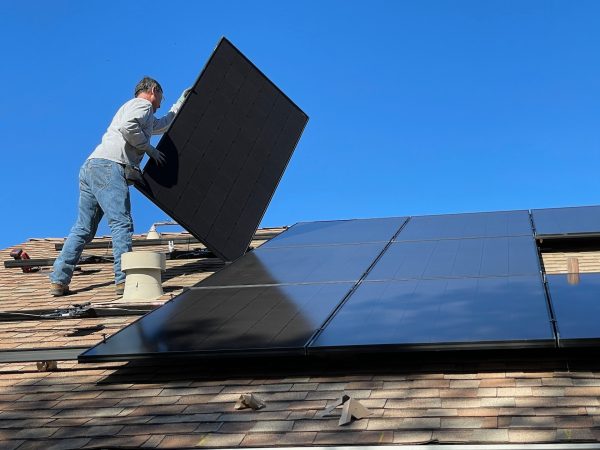The use of solar panels has been steadily increasing in recent years, as the world becomes more environmentally conscious and seeks alternative sources of energy. This section will provide an overview of the current state of solar panels, including the growth in installations, technological advancements, and government incentives and policies. By understanding the current landscape of solar panels, we can better anticipate the future of this renewable energy source.
1. Growth in Solar Panel Installations
- Rapid increase in solar panel installations worldwide
- Driven by declining costs of solar technology
- Government incentives and policies supporting solar energy
- Growing awareness of environmental benefits
- Adoption by residential, commercial, and industrial sectors
2. Technological Advancements
Technological advancements in solar panels have greatly improved their efficiency and performance. Through innovations such as higher cell efficiency, advanced materials, and improved manufacturing processes, solar panels have become more affordable and accessible. Ongoing research and development will continue to drive even greater advancements in the future.
3. Government Incentives and Policies
- Research government incentives and policies for solar panel installations especially if you are considering solar panels for businesses.
- Check if there are tax credits or rebates available for solar panel systems.
- Understand any net metering policies that allow you to sell excess energy back to the grid.
- Find out if there are grants or financing options to help offset the initial cost.
Did you know that Government Incentives and Policies play a crucial role in promoting the adoption of solar panels?
What Is the Future of Solar Panels?
As our world shifts towards renewable energy sources, solar panels are at the forefront of this transition. But what does the future hold for this technology? In this section, we will explore the potential advancements and developments in solar panels. From increased efficiency to integration with smart grids, we will delve into the various ways that solar panels are evolving. Additionally, we will discuss the potential for solar panels to expand into new markets and even be incorporated into roofing materials. The future of solar panels is bright, and we are just scratching the surface of its potential.
1. Increased Efficiency
Maximizing energy production requires increased efficiency in solar panels with Solar Path NSW. Here are some key steps to achieve this goal:
- Enhanced Photovoltaic (PV) Cell Design: Improving the design of PV cells to capture more sunlight and convert it into electricity efficiently.
- Advanced Materials: Incorporating new materials with better light absorption and electron transport properties to enhance efficiency.
- Anti-reflective Coatings: Applying coatings to reduce the loss of sunlight due to reflection, allowing more light to reach the PV cells.
- Tracking Systems: Implementing solar tracking systems to orient panels towards the sun throughout the day, optimizing sunlight exposure.
- Concentrated Solar Power (CSP): Utilizing CSP technology to focus sunlight onto PV cells, improving efficiency by concentrating sunlight.
2. Integration with Smart Grids
Integration with smart grids is a crucial aspect of solar panel technology.
- Step 1: Solar panels generate electricity from sunlight.
- Step 2: Smart grids intelligently manage the flow of electricity.
- Step 3: Integration allows for seamless connection between solar panels and the grid.
- Step 4: This enables efficient distribution and utilization of solar energy.
In recent years, the integration of solar panels with smart grids has revolutionized the renewable energy sector, providing better monitoring, control, and optimization of solar power generation.
The integration of solar panels with smart grids gained momentum in the early 2000s, thanks to advancements in digital communication and renewable energy technologies. It has since become a key focus area for research and development, contributing to the growth and sustainability of the solar energy industry.
3. Expansion into New Markets
- Identify potential new markets for solar panels, such as developing countries or regions with high solar energy potential.
- Conduct market research to understand the demand, competition, and regulatory environment in these new markets.
- Develop strategic partnerships with local companies or organizations to navigate cultural, legal, and logistical challenges.
- Customize marketing and sales strategies to cater to the specific needs and preferences of the target market.
- Adapt the product offering, pricing, and financing options to make solar panels accessible and affordable in the new markets.
4. Potential for Solar Roofing
The possibility of having solar roofing offers numerous benefits for homeowners:
- Energy Savings: Solar roofing can produce electricity, reducing reliance on traditional energy sources.
- Cost Savings: By generating your own electricity, you can decrease your monthly utility bills.
- Environmental Impact: Solar roofing decreases carbon emissions, promoting a more environmentally friendly atmosphere.
- Increased Home Value: Solar panels can add value to your home.
- Long-Term Investment: Solar roofing provides a long-term solution for energy, with the potential for a return on investment.


